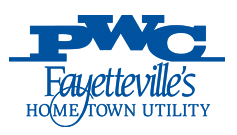Winterize Your Pipes
Water lines should be protected during low temperatures. This can be done by checking around your home for locations, both inside and out, where water supply lines are in unheated areas.
- Look in the basement, crawl space, attic, garage, and under kitchen and bathroom cabinets. Pipes for both hot and cold water in these areas should be insulated.
- Disconnect and drain outdoor hoses. Close inside valves supplying outdoor water faucets (hose bib) and then open the outside faucets to allow water to drain. Keep the outside valve open so that any water remaining in the pipe can expand without causing the pipe to break.
- Locate your master water shutoff valve so you know where it is if you do have a pipe break. It may be near the water heater or the washing machine. More likely it is where the water service pipe enters the house from the street.
- Protect your lawn irrigation system’s backflow prevention device. These are typically located in your front yard and have a white box-like cover. Insulate the inside of the cover and protect the pipes by wrapping/tape insulation, newspaper, a blanket or even a pool noodle around the pipes to prevent freezing.
- Close your home’s foundation vents to reduce the circulation of cold air underneath your home.
- Have a plumber’s telephone number handy. Write it down before you need it in an emergency.
Without proper preparation, your sprinkler system might be damaged by freezing temperatures. Here are some tips on how to prepare your irrigation system for winter conditions.
- Shut off the water supply to the irrigation system. The main shut off valve for your irrigation system needs to be protected against freezing. Make sure it is wrapped with insulation (foam insulation tape and a plastic bag) to protect it from harsh winter temperatures and prevent it from freezing.
- Remove the water from the pipes and sprinklers so that it won’t freeze/expand and break the pipe. There are several ways to drain your pipes: a manual drain valve, an automatic drain valve or the compressed air blow-out method. Contact your local irrigation specialist for help. Many offer sprinkler winterization services this time of the year.
- Insulate backflow preventers and valves if they are above ground. You can also use insulation tape for this. Be sure not to block the air vents and drain outlets on backflow preventers.
Source: rainbird.com









